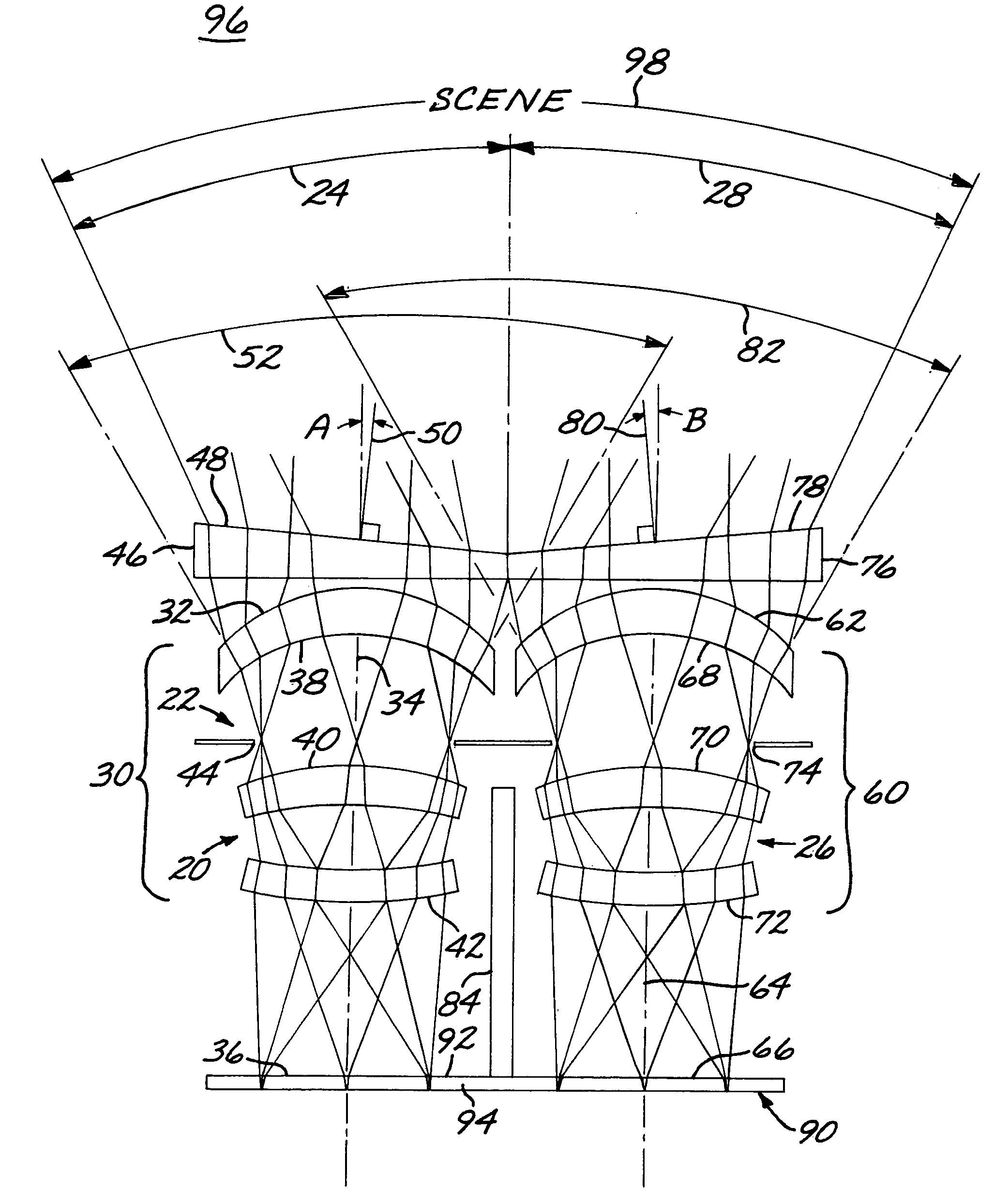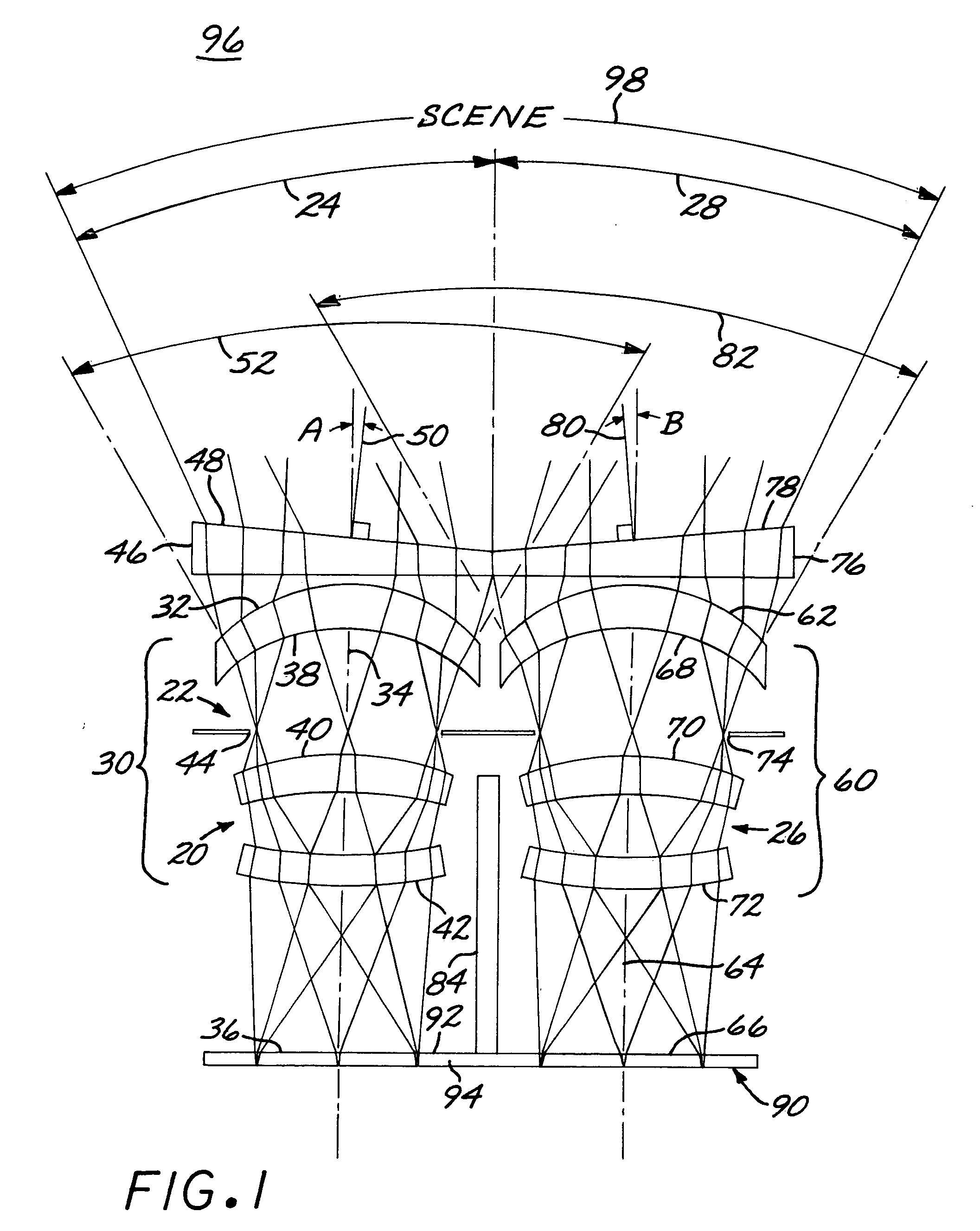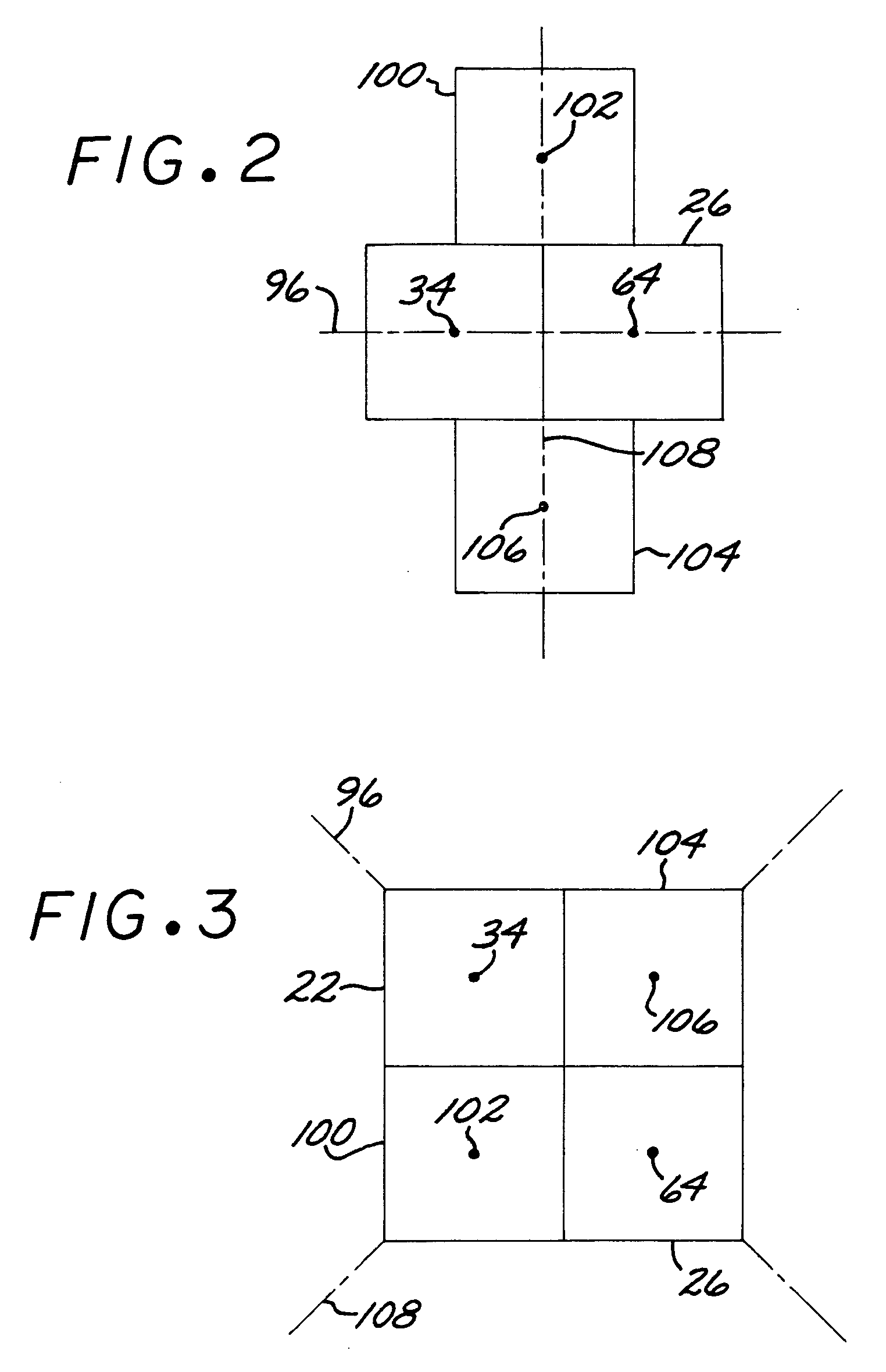Compact, wide-field-of-view imaging optical system
a wide-field-of-view imaging and optical system technology, applied in the field of compact, wide-field-of-view imaging optical systems, can solve the problems of low signal-to-noise ratio, difficult to design a compact, light-weight wfov optical system, and required long exposure time to produce usable images, etc., to achieve a large numerical aperture and high signal-to-noise ratio
- Summary
- Abstract
- Description
- Claims
- Application Information
AI Technical Summary
Benefits of technology
Problems solved by technology
Method used
Image
Examples
Embodiment Construction
[0018]FIG. 1 depicts an imaging optical system 20. The imaging optical system 20 includes a first imaging structure 22 having a first field of view 24, and a second imaging structure 26 parallel to the first imaging structure 22 and having a second field of view 28 different from the first field of view 24.
[0019] The first imaging structure 22 includes a first lens module 30 having a first-lens-module input end 32 closest to the scene, a first optical axis 34, and a first focal plane 36. The depicted preferred embodiment of the first lens module 30 includes a first lens 38, a second lens 40, and a third lens 42, although other specific lens arrangements may be used. The first lens 38 is between the input end 32 and an aperture stop 44, and the second lens 40 and third lens 42 are between the aperture stop 44 and the first focal plane 36. The lenses of the first lens module 30 are selected to image light rays entering the input end 32 from a scene onto the first focal plane 36. The ...
PUM
 Login to View More
Login to View More Abstract
Description
Claims
Application Information
 Login to View More
Login to View More - R&D
- Intellectual Property
- Life Sciences
- Materials
- Tech Scout
- Unparalleled Data Quality
- Higher Quality Content
- 60% Fewer Hallucinations
Browse by: Latest US Patents, China's latest patents, Technical Efficacy Thesaurus, Application Domain, Technology Topic, Popular Technical Reports.
© 2025 PatSnap. All rights reserved.Legal|Privacy policy|Modern Slavery Act Transparency Statement|Sitemap|About US| Contact US: help@patsnap.com



